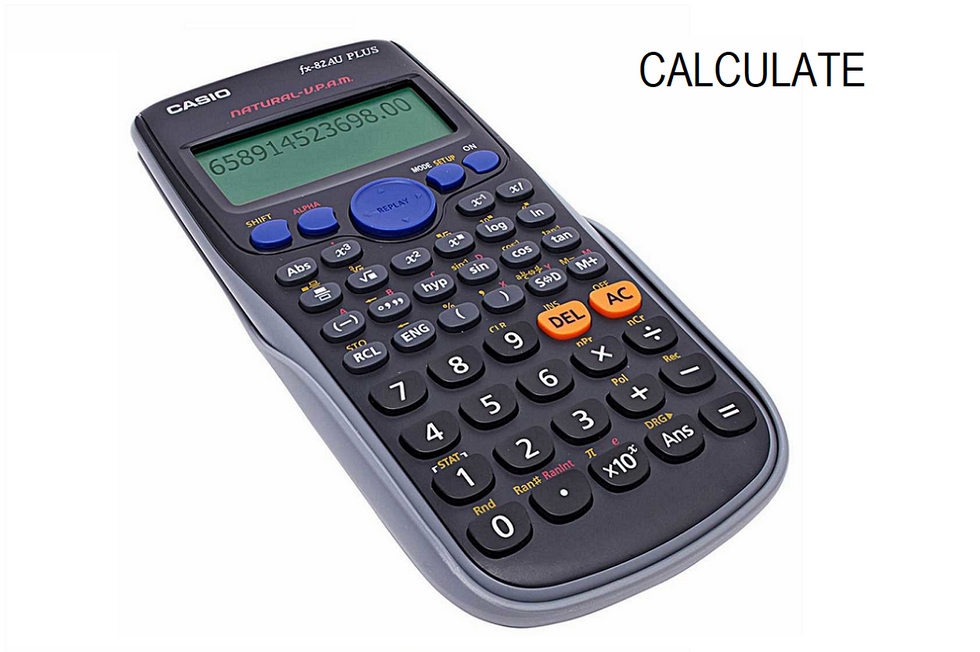While scientific calculators may execute the same operations as regular electronic calculators, they also provide a plethora of extra benefits.
A rudimentary calculator, in the form of our smartphones, is something that most of us always have on us. However, what if you are enrolled in upper-level science and mathematics courses? Or if you're in a field like engineering, surveying, medicine, or chemistry where intricate mathematical calculations are routinely used in the creation and development of cutting-edge ideas?
If your difficulties are really complex, you'll need a different approach. For this purpose, a scientific calculator will do. The usage of a free calculator may also be mandated in any upcoming or current advanced mathematics courses.
First, let's define what a scientific calculator is and go through five distinct uses for it, and then we'll examine three HP scientific calculators at various pricing points at the conclusion of the post.
Explain the function of a scientific calculator.
While scientific calculators may execute the same operations as regular electronic calculators, they also provide a plethora of extra benefits. The three primary types of calculators available today are business calculators, simple calculators, and scientific calculators.
You have probably used a calculator before, perhaps a simple one in high school math studies or a more advanced one in economics or business statistics classes.
However, only the scientific calculator is capable of doing the calculations necessary for subjects like trigonometry, physics, chemistry, and engineering.
Working with exponents and logs requires more memory than is often available on a standard calculator, making a scientific calculator the tool of choice for those seeking precise answers.
Simple operations like addition, subtraction, multiplication, and division are possible, although they just scratch the surface of the calculator's capabilities.
Five Uses of Scientific calculator
Exponents and the fundamental functions
Perform mathematical operations as fundamental as addition, subtraction, multiplication, and division with a calculator. You need to keep in mind that the sign for subtraction (-) is not the same as a distinct negative function in each given situation. Because the signs for positive and negative numbers are so similar to one another, using a calculator for the first time might result in some misunderstanding regarding the difference between the two types of numbers.
Logarithms
It's possible that you'll need to study logarithms once you've mastered more advanced material in calculus and trigonometry. You may use these calculations to figure out how fast something is moving, how big an area it occupies, and a lot more besides.
These were nearly exclusively hand-done in the past. Today, the problem can be solved using a calculator in a matter of seconds when the right data is entered.
Applications of the sine, cosine, and tangent
sine functions are assumed knowledge in any calculus or trigonometry lesson. It's also common to encounter them while pursuing a profession in the engineering or building design industries.
Symbols used in science
The utility of a scientific calculator extends well beyond the solution of difficult mathematical equations. One of its strongest points is perhaps the fact that it can perform calculations in scientific notation. A standard calculator will not handle numbers that are too big to be expressed as a decimal.
If you want a career in science, technology, engineering, or mathematics, you'll need a more advanced calculator to manage your schoolwork and the scientific notation that goes along with it.
Calculations in binary form
A scientific calculator can solve for binary functions in the same way that you would solve for notations or logs, tangents, and sines by entering equations. Two variables are needed for these equations.
This is something you'll certainly talk about while learning about the Cartesian product and subsets, but you could also run across it in algebra or calculus when you're trying to solve for an unknown.
Another form of equation that requires a calculator with memory if you want to keep track of it and build on your previous work or save your progress for later use is one like this.
In conclusion
In the past, entire classes were devoted to the process of learning how to solve specific equations. However, students may not have been expected to actually learn what the purpose of those equations was or how they would apply those equations in their future careers.
Because of the scientific calculator, it is now much simpler to carry out a wide variety of operations and evaluate the potential effects those operations may have on a career in the mathematical sciences or the natural sciences.






















 sunrise
StableDiffusion
sunrise
StableDiffusion
 bonfire friends
StableDiffusion
bonfire friends
StableDiffusion
 sadness
StableDiffusion
sadness
StableDiffusion

 purple skies
StableDiffusion
purple skies
StableDiffusion









